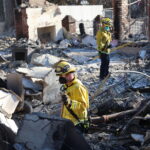Though the risk of a fire as a result of a defective appliance has decreased in recent years, appliances should still be examined as a potential ignition source, says a forensic expert.
In an interview with Claims Journal, John Mulcahy, a forensic electrical engineer with NEFCO Fire Investigations, described the hazards and common safety features found in appliances and how the names of manufacturers are identified post-fire.
A typical house has 4000 feet of electrical wiring, 70 switches and receptacles, and approximately 25 lamps and lights, according to Mulcahy. In addition, most homes have 25 or so large and small appliances including dishwashers, stoves, microwaves and blow-dryers.
Because of the number of electricity reliant appliances in a home, there are a number of things that can go wrong, Mulcahy said. “Many appliances…are very safe; however, it is possible for a manufacturing defect to come through. Many of these appliances produce heat. If one of the protectant features fail, excessive heat is developed and can set fire to appliances and surrounding material.”
One manufacturer had a problems with fires within its coffee makers during the 1980s. The fires were the result of a defective fuse inside the appliance. “Since then, they have corrected it by putting two of those fuses in a series in the coffee maker, making it virtually impossible for both fuses to fail at the same time,” Mulcahy said.
According to Mulcahy, many appliances contain safety features, such as thermostats, to protect against fires, fusing to protect from overload and thermal cutout devices that can open up the electrical circuit to the appliance and disable it if excessive heat develops.
Besides hazards due to manufacturing defects and overheating, an electrical outlet that is operated beyond its rating can be a problem, Mulcahy said.
Potential warning signs of an appliance fire hazard include:
- power outages
- dim or flickering lights
- overloaded receptacles
- arcs or sparks
- buzzing or sizzling noises
- loose plugs
- odors
During a scene investigation where there is suspicion an appliance may have caused a fire, Mulcahy will look for things like sparking, electrical wires shorting, and deep heat that has melted certain areas surrounding the appliance.
After determining the ignition point within an appliance, Mulcahy will examine the suspect appliance to identify the make, model, date of manufacture, and serial number. This can prove difficult because most appliances now have paper decals that are typically destroyed during a fire. Mulcahy recommends examining the plug for model numbers. In addition, a United Laboratories lnc. (UL) number can assist in tracking down information on an appliance manufacturer.
Was this article valuable?
Here are more articles you may enjoy.

 Trump’s Tariffs Threaten to Endanger the Cheap American Car
Trump’s Tariffs Threaten to Endanger the Cheap American Car  Ticketmaster May Have Broken Law With ‘Platinum’ Oasis Seats
Ticketmaster May Have Broken Law With ‘Platinum’ Oasis Seats  Bankrupt 23andMe’s DNA Data Gets Sale Nod as Concerns Linger
Bankrupt 23andMe’s DNA Data Gets Sale Nod as Concerns Linger  After the Flames: Preparing for the Growing Fraud Threat in Los Angeles
After the Flames: Preparing for the Growing Fraud Threat in Los Angeles 